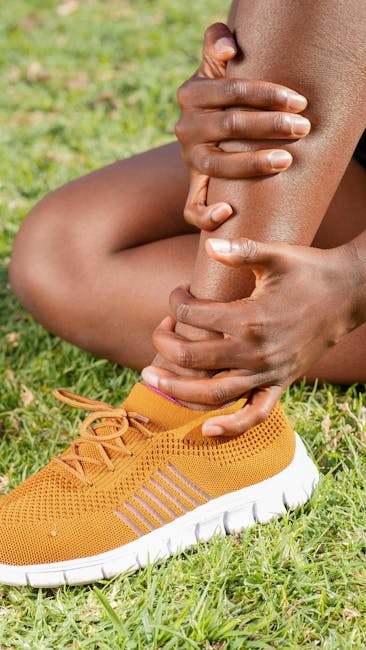Exercise plays a pivotal role in managing chronic pain, offering a beacon of hope for those seeking relief.
By incorporating physical activity into daily routines, individuals can experience significant improvements in pain levels and overall well-being.
This article delves into the intricate relationship between exercise and chronic pain management, providing insights and practical tips for those looking to embrace a more active lifestyle.
Keep reading to discover how exercise can transform your approach to managing chronic pain.
Key Takeaways
- Exercise can significantly reduce chronic pain levels.
- It improves overall well-being and enhances physical function.
- Various types of exercises, such as low-impact aerobics and mind-body exercises, are beneficial.
- Designing a personalized exercise program is crucial for effective pain management.
- Consulting healthcare professionals ensures safety and effectiveness.
Introduction to Chronic Pain and Exercise
Understanding Chronic Pain
Chronic pain is like an uninvited guest that overstays its welcome.
Unlike acute pain, which is a temporary response to injury, chronic pain lingers for months or even years.
It can stem from various conditions, such as arthritis, fibromyalgia, or back injuries, and often affects one’s quality of life.
Managing chronic pain is not just about alleviating discomfort; it’s about reclaiming control over one’s life.
Overview of Exercise as a Management Tool
Exercise is a powerful tool in the battle against chronic pain.
It may seem counterintuitive to move when you’re in pain, but physical activity can actually help reduce discomfort.
Exercise releases endorphins, the body’s natural painkillers, and improves blood flow, which can help heal injured tissues.
Moreover, it strengthens muscles, enhances flexibility, and boosts mood, making it a holistic approach to pain management.

The Benefits of Exercise in Chronic Pain Management
Reduction of Pain Levels
Exercise has been shown to reduce pain levels in individuals with chronic conditions.
By engaging in regular physical activity, the body becomes more resilient to pain signals.
This resilience is akin to building a fortress against the onslaught of discomfort.
Studies have demonstrated that exercise can decrease pain perception and increase pain tolerance, providing a natural and effective way to manage chronic pain.
Improvement in Overall Well-being
Beyond pain reduction, exercise enhances overall well-being.
It acts as a mood booster, reducing symptoms of anxiety and depression often associated with chronic pain.
Imagine exercise as a gentle breeze that sweeps away the clouds of despair, revealing a brighter, more hopeful horizon.
Regular physical activity promotes better sleep, increased energy levels, and a more positive outlook on life.
Enhancement of Physical Function
Exercise improves physical function, allowing individuals to perform daily activities with greater ease.
It strengthens muscles, enhances flexibility, and improves balance, reducing the risk of falls and injuries.
Think of exercise as a key that unlocks the door to a more active and fulfilling life.
By incorporating exercise into their routine, individuals can regain independence and enjoy a higher quality of life.

Clinical Evidence Supporting Exercise for Chronic Pain Management
Research Findings on Exercise and Pain Reduction
Numerous studies have highlighted the effectiveness of exercise in reducing chronic pain.
Research has shown that regular physical activity can lead to significant improvements in pain levels and overall function.
For instance, a study published in the CDC’s Morbidity and Mortality Weekly Report found that exercise interventions were associated with reduced pain and improved physical function in individuals with chronic pain conditions.
Studies on Long-term Benefits of Exercise
The long-term benefits of exercise for chronic pain management are well-documented.
Engaging in regular physical activity not only reduces pain but also prevents its recurrence.
A study published in the MDPI journal found that individuals who maintained an exercise routine experienced sustained improvements in pain levels and overall well-being over time.
Comparative Analysis with Other Pain Management Strategies
When compared to other pain management strategies, exercise stands out as a safe and effective option.
While medications and therapies can provide temporary relief, exercise offers a long-term solution without the risk of side effects.
A comparative analysis published in PubMed found that exercise interventions were more effective in reducing pain and improving function than other conventional treatments.

What Type of Exercise is Best for Chronic Pain Management
Low-impact Aerobic Exercises
Low-impact aerobic exercises are gentle on the joints and ideal for individuals with chronic pain.
These exercises elevate the heart rate without putting excessive strain on the body.
Walking
Walking is a simple yet effective exercise for managing chronic pain.
It can be done anywhere, requires no special equipment, and allows individuals to enjoy the outdoors.
Walking helps improve cardiovascular health, strengthens muscles, and boosts mood.
Swimming
Swimming is another excellent low-impact exercise.
The buoyancy of water reduces stress on the joints, making it an ideal choice for those with arthritis or back pain.
Swimming enhances cardiovascular fitness, builds strength, and improves flexibility.
Strength Training
Strength training is essential for building muscle and improving joint stability.
It involves using resistance, such as weights or resistance bands, to strengthen muscles.
Strength training can help reduce pain by supporting and protecting joints, making daily activities easier to perform.
Flexibility and Stretching Exercises
Flexibility and stretching exercises improve range of motion and reduce stiffness.
These exercises help maintain joint health and prevent injuries.
Incorporating stretching into a daily routine can alleviate tension and promote relaxation.
Mind-body Exercises
Mind-body exercises, such as yoga and tai chi, combine physical movement with mental focus.
These exercises promote relaxation, reduce stress, and enhance overall well-being.
Yoga
Yoga involves a series of poses and breathing exercises that improve flexibility, strength, and balance.
It encourages mindfulness and relaxation, making it an effective tool for managing chronic pain.
Tai Chi
Tai chi is a gentle form of martial arts that involves slow, flowing movements.
It improves balance, flexibility, and mental focus, providing a holistic approach to pain management.

Designing an Exercise Program for Chronic Pain Management
Assessing Individual Pain Levels and Capabilities
Before starting an exercise program, it’s important to assess individual pain levels and capabilities.
This assessment helps tailor the program to meet specific needs and ensure safety.
Consulting with a healthcare professional can provide valuable insights and guidance.
Setting Realistic Goals
Setting realistic goals is crucial for success.
Goals should be specific, measurable, and achievable, providing a clear roadmap for progress.
Celebrating small victories along the way can boost motivation and confidence.
Incorporating Variety in Exercise Routines
Incorporating variety in exercise routines keeps things interesting and prevents boredom.
Mixing different types of exercises, such as aerobics, strength training, and mind-body exercises, can provide a well-rounded approach to pain management.

Starting an Exercise Program
Consulting Healthcare Professionals
Before embarking on an exercise journey, it’s essential to consult healthcare professionals.
They can provide personalized recommendations and ensure that the chosen exercises are safe and effective.
Gradual Progression and Monitoring
Gradual progression is key to avoiding injury and ensuring long-term success.
Starting slowly and gradually increasing intensity and duration allows the body to adapt and build strength.
Regular monitoring and adjustments can help maintain progress and prevent setbacks.
Safety Tips and Precautions
Safety should always be a priority when exercising.
Wearing appropriate footwear, staying hydrated, and listening to the body’s signals can prevent injuries.
It’s important to stop exercising if pain worsens and seek medical advice if needed.
Chronic Pain Management and Exercise
Integrating Exercise into Daily Life
Integrating exercise into daily life can be as simple as taking the stairs instead of the elevator or going for a walk during lunch breaks.
Finding opportunities to move throughout the day can make a significant difference in managing chronic pain.
Overcoming Barriers to Exercise
Barriers to exercise, such as lack of time or motivation, can be challenging to overcome.
Finding activities that are enjoyable and convenient can help make exercise a regular part of life.
Enlisting the support of friends or family can also provide encouragement and accountability.
Maintaining Motivation
Maintaining motivation is essential for long-term success.
Setting goals, tracking progress, and celebrating achievements can keep motivation high.
Remembering the benefits of exercise and how it improves quality of life can provide the drive needed to stay active.

Conclusion
Recap of Exercise Benefits for Chronic Pain
Exercise offers a multitude of benefits for managing chronic pain.
It reduces pain levels, improves overall well-being, and enhances physical function.
By incorporating exercise into their routine, individuals can experience a better quality of life and regain control over their pain.
Encouragement to Incorporate Exercise into Pain Management Plans
Incorporating exercise into pain management plans is a powerful step towards a healthier, more active life.
With the guidance of healthcare professionals and a commitment to regular physical activity, individuals can unlock the potential of exercise to transform their approach to managing chronic pain.
For more insights on the connection between physical activity and mental health, explore the role of physical exercise in mental health maintenance.
Additionally, understanding the mind-body connection and chronic pain management can further enhance your approach to pain relief.
By embracing exercise, individuals can embark on a journey towards improved well-being and a brighter future.
Exploring the FAQ on The Role of Exercise in Managing Chronic Pain: Your Path to Relief
How does exercise help in managing chronic pain?
Exercise can help manage chronic pain by increasing endorphin levels, which are natural painkillers produced by the body. Regular physical activity also enhances flexibility, strength, and overall physical function, which can reduce the severity of pain and improve quality of life.
What types of exercise are most effective for chronic pain relief?
Low-impact exercises such as swimming, walking, and cycling are often recommended for chronic pain relief. These activities minimize stress on the joints while improving cardiovascular health and muscle strength. Stretching and flexibility exercises, like yoga or tai chi, can also be beneficial in reducing stiffness and improving range of motion.
How often should someone with chronic pain exercise?
It is generally recommended to engage in moderate exercise for at least 150 minutes per week, spread over several days. However, individuals with chronic pain should tailor their exercise routine to their personal tolerance levels and consult with healthcare professionals to create a suitable plan.
Can exercise worsen chronic pain?
While exercise is beneficial, overexertion or incorrect form can exacerbate pain. It’s important to start slowly and gradually increase intensity, paying attention to the body’s signals. Consulting with a physical therapist or a healthcare provider can help ensure exercises are performed safely and effectively.
Are there any specific exercises to avoid when dealing with chronic pain?
High-impact activities, such as running or heavy weightlifting, may aggravate chronic pain conditions. It’s crucial to avoid exercises that cause pain or discomfort and to focus on low-impact, gentle movements that promote healing and strength without causing additional stress.
How can someone stay motivated to exercise despite chronic pain?
Setting realistic goals, tracking progress, and celebrating small achievements can help maintain motivation. Joining a support group or exercising with a friend can also provide encouragement. Remembering the long-term benefits of exercise on pain management can serve as a powerful motivator.
What role does a physical therapist play in managing chronic pain through exercise?
A physical therapist can design a personalized exercise program tailored to an individual’s specific pain condition and physical capabilities. They provide guidance on proper technique, monitor progress, and adjust the program as needed to ensure safety and effectiveness.
Can exercise replace medication for chronic pain management?
While exercise can significantly reduce the need for medication, it is not typically a complete replacement. Exercise should be part of a comprehensive pain management plan that may include medication, physical therapy, and other treatments as advised by healthcare professionals.
How long does it take to see improvements in chronic pain with regular exercise?
Improvements can vary based on the individual and the type of exercise performed. Some people may notice benefits within a few weeks, while others might take a few months to experience significant changes. Consistency and patience are key to achieving long-term pain relief through exercise.
Is it safe to exercise during a chronic pain flare-up?
During a flare-up, it may be necessary to modify or reduce the intensity of exercise. Gentle activities like stretching or walking can help maintain mobility without exacerbating pain. It’s important to listen to the body and consult with a healthcare provider to determine the best approach during these times.



